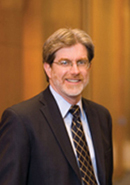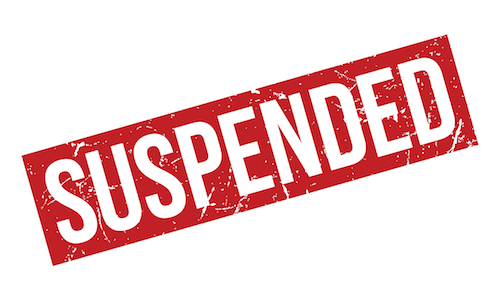Taking the Firm to SCOTUS School

Joseph Guerra.
Photo by Ron Aira
Nine Northwestern University law students gather in a semicircle. Two nibble on lunch as others sip coffee and several hammer out notes on laptop computers. All listen attentively as Joseph R. Guerra, an appellate litigator with the Washington, D.C., office of Sidley Austin, lectures on strategies for writing reply briefs.
Guerra homes in on several sample briefs, including one he wrote on behalf of the petitioner in Gomez-Perez v. Potter, No. 06-1321, an age discrimination case filed by a postal worker and granted cert by the U.S. Supreme Court. “What,” asks Guerra, “is the nub of the issue?”
Later he tells the students, “The first impression matters in any brief, but it really matters in the reply brief. I think it’s important to be straight.”
Guerra came to Chicago last fall to help guide Northwestern’s Supreme Court litigation clinic. It’s one of several such programs cropping up at elite law schools around the country.
Since Stanford Law School launched the first such clinic in 2004, others have followed: Northwestern, Yale, the University of Texas and the University of Virginia began theirs in 2006; Harvard and New York University kicked off last fall.
The clinics function as miniature pro bono law firms, tackling cases concerning criminal and discrimination issues, as well as laws governing voting rights and maritime jurisdiction. Typically, their clients are petitioners lacking the resources to move up the appellate chain without the assistance of eager students, full-time faculty and dedicated outside practitioners willing to give their time.
FIRM BENEFITS
But the clinics share something else. All have allied with well-known Supreme Court practitioners and their law firms. The advantage is mutual: Top-tier law schools gain a glamorous clinic to offer students and to appeal to applicants in an increasingly competitive market.
Faced also with a shrinking Supreme Court docket, firms are going all out to seek opportunities to appear before the justices. Meanwhile, law firms—facing their own competition for high-powered clients and the most talented grads—get a leg up on recruiting as well as an additional labor pool.
“It’s an arms race,” says Stanford professor Pamela S. Karlan, the founder and co-director of the school’s pioneering clinic. “This seems hot; this seems sexy. I’ve talked to a number of lawyers who are Supreme Court practitioners in Washington, and almost all of them have been approached by at least one law school.”
Not that the law firms realize a profit from the clinics; on the contrary, the students require a large commitment of nonbillable hours from the overseeing attorneys. With the focus on developing skills using real cases and with a strong emphasis on writing, students often have to rework documents numerous times before they are ready for submission.
“For many firms, it’s almost a loss leader,” says Karlan, who clerked for Justice Harry A. Blackmun. “Students go to firms in part because they have Supreme Court practices, and clients go to the firms with the understanding that, although hardly ever does a case go to the Supreme Court, this is a firm that’s capable of taking it there if it does.”
LITIGATION ALL-STARS
Stanford has teamed with ubiquitous high court litigator Thomas Goldstein, who left his own firm to become a partner at Akin Gump Strauss Hauer & Feld in D.C. He oversees the firm’s Supreme Court practice and runs SCOTUSblog.
The school also relies on the counsel of Amy Howe, who is Goldstein’s wife, and Kevin Russell of Howe & Russell in D.C. Full-time faculty co-directors Karlan and Jeffrey Fisher, another eminent litigator who specializes in criminal procedure, back the three outside attorneys.
“I had a huge pro bono practice,” recalls Goldstein of his work before teaming up with Stanford. The clinic “was a way of getting us to do work that we really loved and establishing the Supreme Court practice.”
He adds: “I think the law firms recognize the recruiting value of it and the business development value.”
Among the other schools, Harvard has garnered Goldstein’s services as a visiting lecturer; it also has an arrangement with lawyers at O’Melveny & Myers. Yale has tapped Mayer Brown; Texas works with Kellogg, Huber, Hansen, Todd, Evans & Figel; and NYU has teamed with Jones Day.
Mark Stancil, a 33-year-old appellate litigator with Robbins, Russell, Englert, Orseck, Untereiner & Sauber, says the firm’s involvement with the University of Virginia clinic has boosted his Supreme Court expertise and led to new business for the boutique firm.
“I’m a relatively young lawyer. I’m probably the youngest of the clinic leaders in private practice,” says Stancil, who lives just a stone’s throw from UVA’s campus in Charlottesville and commutes to Washington. He clerked for Chief Justice William H. Rehnquist.
“It’s a great way for me to get a lot of experience in the court on a lot of cases that maybe I wouldn’t get at this stage in my career,” Stancil adds.
Carter Phillips, managing partner of Sidley Austin’s D.C. office, has argued a record number of cases before the court. A Northwestern alumnus, Phillips—who clerked for Chief Justice Warren E. Burger—sits on the law school board, making Northwestern’s partnership with his law firm a natural.
“It seemed like a pretty interesting opportunity to meld what we were doing on a pro bono basis with an educational component,” says Phillips, who teaches at least once a month at Northwestern, sharing visiting faculty responsibilities with Jeffrey T. Green, another Sidley Austin partner with high court expertise in criminal defense matters.
SCOTUS APPEAL
For the students, the lure is more than just the chance to work on important cases with big-time practitioners. They are also drawn by the celebrity status the Supreme Court has achieved in recent years, fostered by the attention given to Bush v. Gore in 2000 and issues surrounding the appointment of Chief Justice John G. Roberts Jr. in 2005.
Law professor Daniel Ortiz, who runs the clinic at UVA, says his students are enthralled. “I’ve noticed that some of them are planning trips around when the court is hearing cases,” he says. “They’ve turned into junkies.”
Echoes Stanford clinic co-director Fisher: “So many lawyers will tell you that their dream is to have one argument in the court. A lot of students share that fascination with the court and the interest to brush up against it.”
The clinics are highly selective; Stanford had roughly four times as many applicants as it did available spots in the most recent semester. The schools usually hold numbers down to no more than 15 participants, typically second- and third-years. Either faculty or students identify cases worth pursuing from the lower courts and then offer support to attorneys handling those cases, rather than taking them over. Increasingly, though, would-be candidates are proactively approaching the clinics.
Over the course of the year, the Northwestern students will meet once a week for a regular seminar. They spend the remainder of their clinic time—an expected 12-16 hours or more per week—working in teams on research; writing petitions for writs of certiorari, and merit and amicus briefs; and assisting with moot courts. The school was granted its first cert petition in June for Gall v. United States, and Green argued it. In December, the court also gave the school a victory, holding that the sentencing judge didn’t abuse his discretion in granting Brian Michael Gall probation instead of imprisonment. 128 S. Ct. 586.
“They’re practically Supreme Court practitioners when they leave,” says Sarah Schrup, Northwestern’s director of appellate advocacy.
Adds Michael Sturley, a professor at UT’s Supreme Court clinic: “The kind of close, detailed analysis that you get into; the kind of research and writing that you need to do; the knowledge that you gain of how cases in real life work—all of that experience will help with any legal analysis.”
Most of the clinics bring students to Washington at least once to hear oral arguments on Supreme Court cases with which they have assisted. Harvard goes a step further, offering students the opportunity to spend their winter term in Washington working with attorneys from O’Melveny & Myers.
And while few students will go on to seek careers as Supreme Court litigators, students and faculty alike agree that the experience offers invaluable training.
“My biggest goal when I come out is to be prepared to handle appellate litigation—not to be surprised by the process,” says Richard Kirkendall, a 25-year-old student attending the clinic at Northwestern. “I think it’s a good opportunity to see the full litigation process.”



